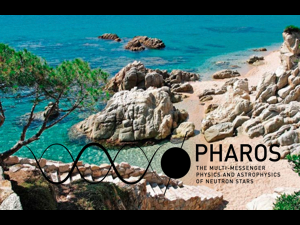Speaker
Mr
Stefano Ascenzi
(Gran Sasso Science Institute/INAF-Oar/INFN)
Description
The observation of Gravitational Wave (GW) event (GW170817) and its electromagnetic counterpart in gamma rays (GRB 170817) and in optical and near-infrared (AT2017gfo) marked the beginning of the multimessenger astronomy with GWs. This event was also the first detection of a binary neutron star (BNS) coalescence as well as the first clear observation of a kilonova, an astrophysical transient powered by radioactive decay of neutron-rich matter expelled during the BNS merger. Kilonovae are particularly interesting for multimessenger astronomy because they are nearly isotropic and observable for a long time (several hours) after the peak GW signal, but they are not the only transients with these features: if a long-lived and fast rotating neutron star (NS) with a high magnetic field results from the BNS coalescence, it can radiate its rotational energy and power a different kind of “spindown-powered” transient. In this talk, I will present our ongoing investigation on spindown-powered transients, approaching the problem for the first time via hydrodynamic simulations in special relativity. The final goal of our work is to provide reliable predictions for observable quantities (i.e. peak luminosity, peak time, spectral range), which are extremely important for the planning of a follow-up observational strategy as well as for the interpretation of future detections.
Primary author
Mr
Stefano Ascenzi
(Gran Sasso Science Institute/INAF-Oar/INFN)
Co-author
Dr
Riccardo Ciolfi
(INAF-Osservatorio astonomico di Padova)

